Tara’s splendid Turquoise Pure Land Yurlod Kurpa, cooling rays of pure vision in the soothing shelter of the blooming lotus of faith
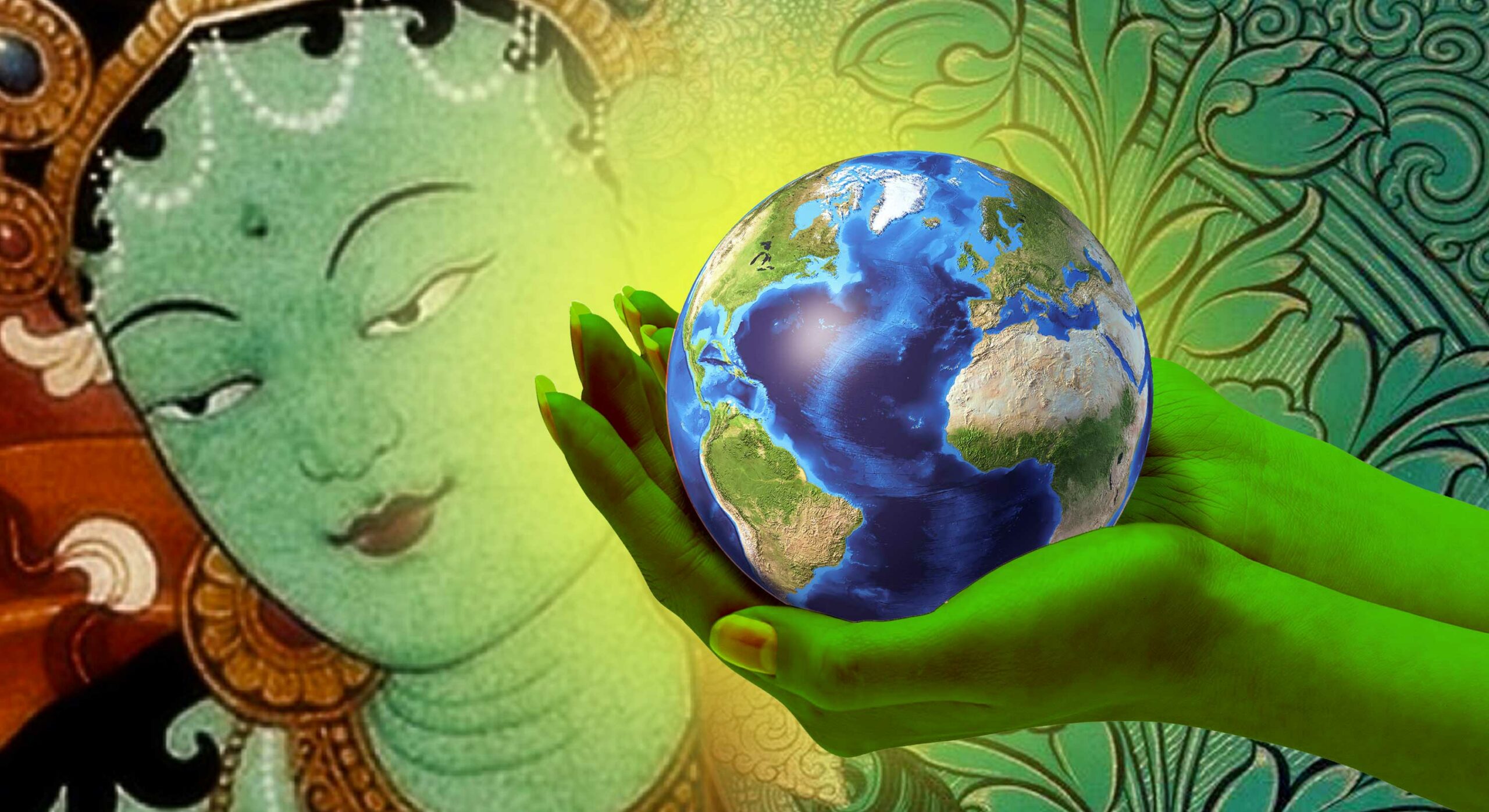
For Tara’s Buddhist devotees, we may aspire to go to Her Turquoise Pureland Yurlod Kurpa after our passing. Most Mahayana Buddhists think of Amitabha’s splendid Western Paradise or Pureland Sukhavati, because of Amitabha’s great vow — but Tara’s Turquoise Pureland is part of that Western Pureland — perhaps in just a little more “verdant” mountainous “neighborhood.”
How can we see this stunning Pureland of forests, mountains, turquoise lakes, wildlife and waterfalls? Delog Dawa Drolma explained, in 1925, that all it takes is a little faith:
“Those sentient beings who actually wish to see the pure realm of Tara in their minds will rejoice in the cooling rays of pure vision in the soothing shelter of the blooming lotus of faith.”
In the same way that Avalokiteshvara emanated from Amitabha — and Tara famously emanated from Avalokiteshvara — their respective Purelands are One. The Divine Trinity is One. But — for those of us who focus on one aspect of the One with Tara as our focus — Her Turquoise Pureland is probably our “destination.”
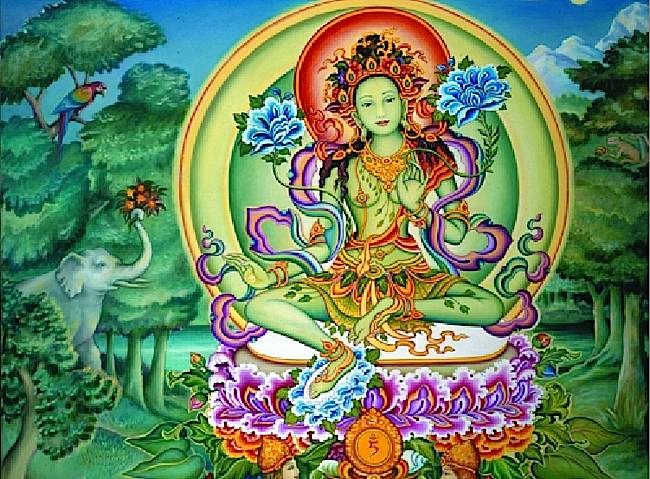
Compare this concept to this more formalized thangka of Sukhavati, Amitabha’s pureland — typically visualized with palaces, formal gardens, and celestial cloud-lands — note, Tara appears upper right of the thangka, indicating she is part of this Pureland:
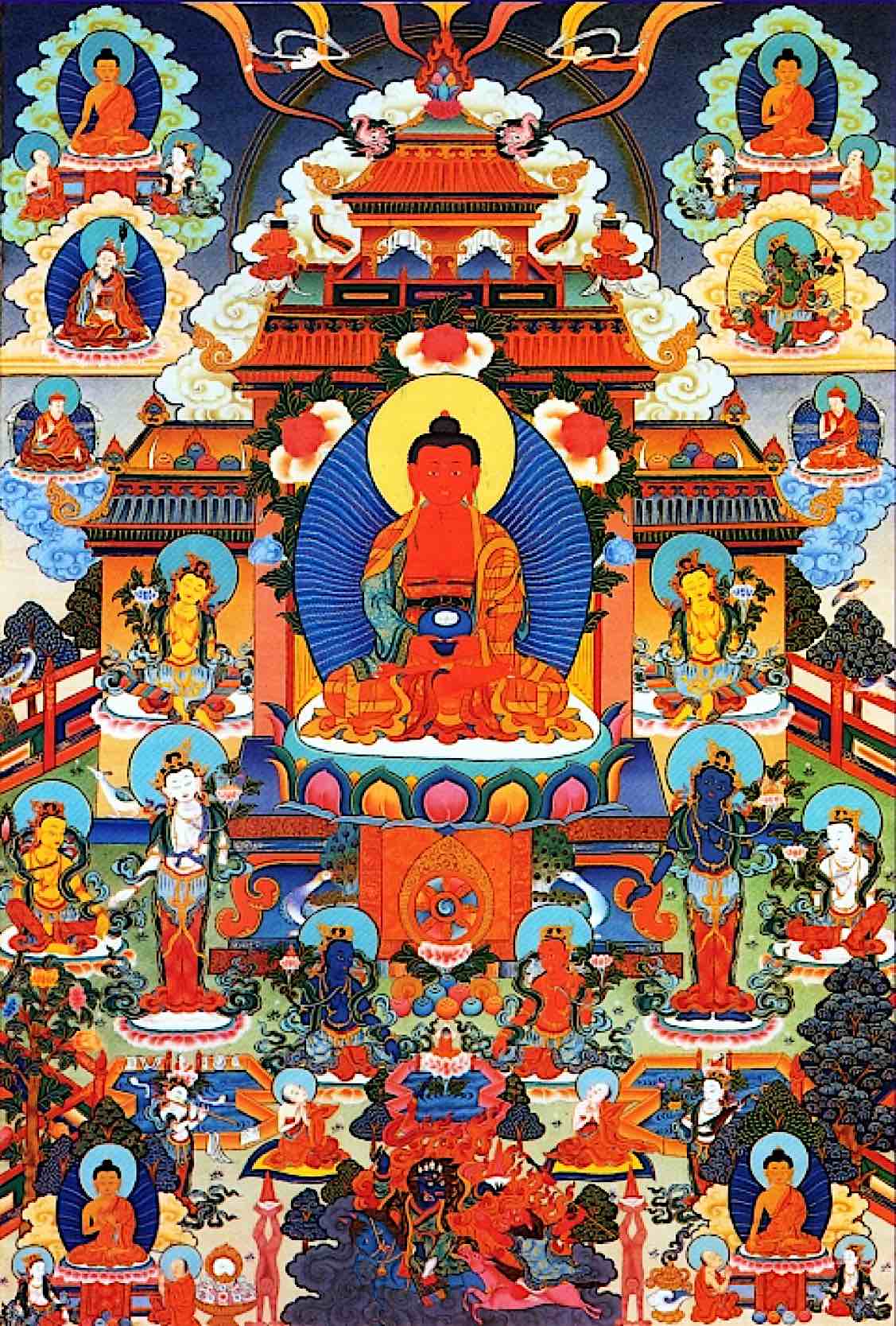
Contrast this again with the “celestial” visualizations of the Western Pureland in Pureland Buddhism:
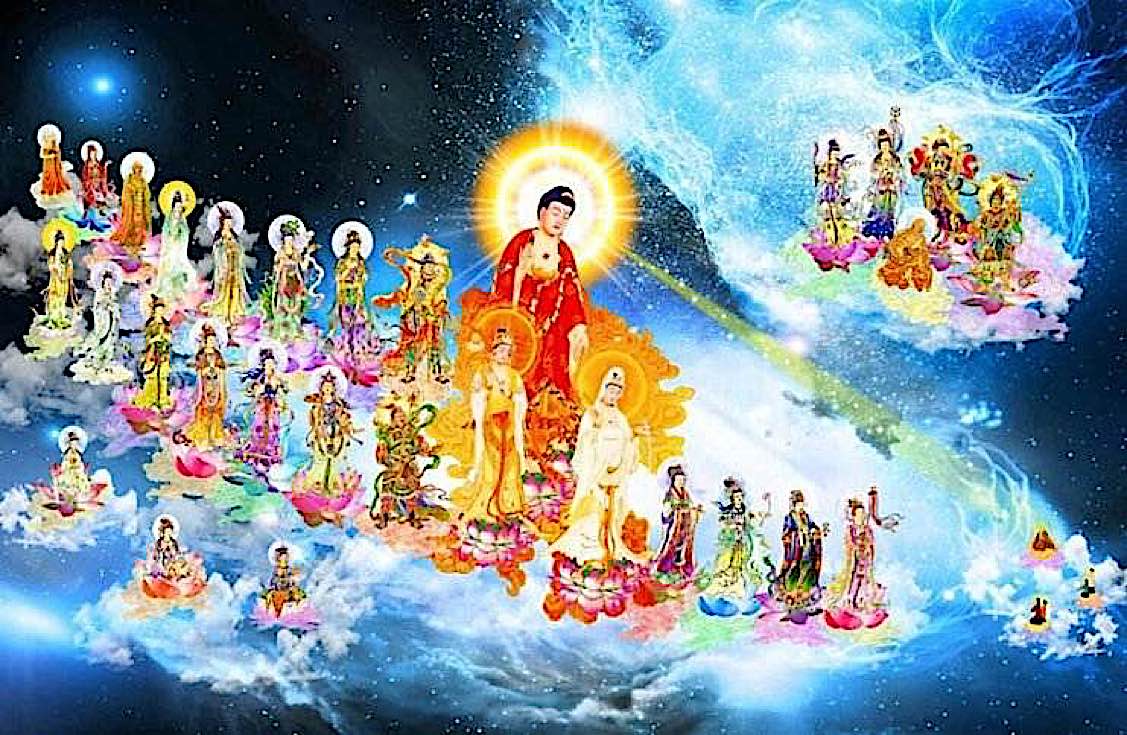
Regardless of how you visualize the Purelands, they are symbolic representations, not meant to be literal. All Purelands, ultimately, are One. At the ultimate level, they are sometimes thought of as the “mind of the Buddha.” Why, though, is Tara’s pureland visualized as a stunning wildscape? In part, it is because the great Yogis who relied on Tara, inevitably practiced in isolation in the wilderness.
Surya Gupta and other great Yogis and Mahasiddhas inevitably attained realizations partially through Tara practice — usually in isolated caves in the wilderness. Why rely on Tara? Because the great Yogis practiced in nature — in isolation. Their only companions were nature, their own mind, and Tara — which you can argue are all three the same thing.
So, if Tara has her own Pureland, just where is She? Of course, She is in all of the Purelands, and in all of everything, as explained by Venerable Zasep Rinpoche [in this feature on Cittamani Tara in Buddha Weekly>>].
“Tara is everywhere. Tara is in the pure lands. Tara is here also. Why is Tara in the pure lands? Tara is in the pure lands to teach to the Bodhisattvas, the highly realized beings… Then, Tara comes down to us, many aspects of Tara — 21 Taras and so on — and there are other aspects of Tara, like Vajrayogini, Palden Lhamo, and so on and so on — so Tara is here, now.”
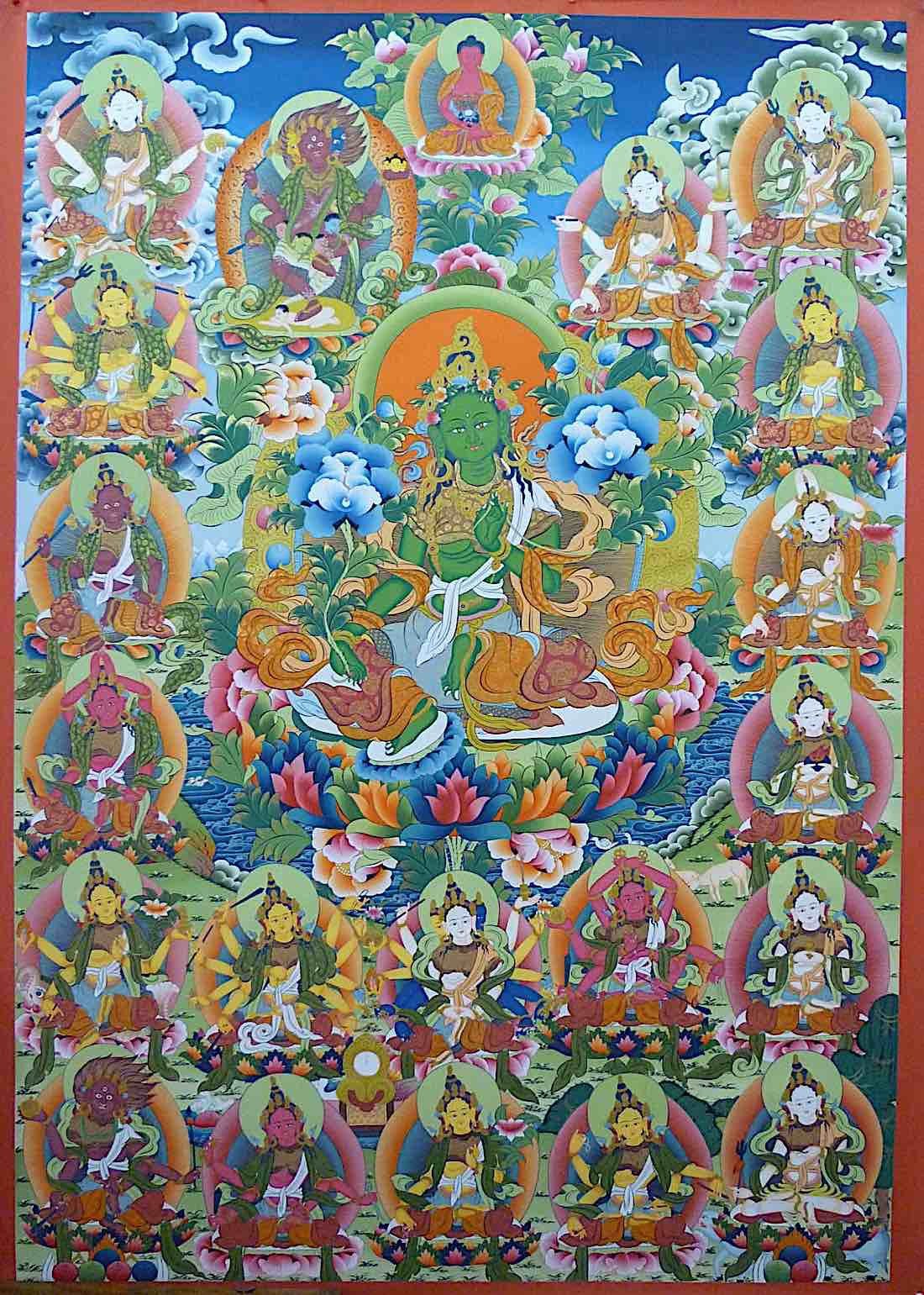
All Purelands are One
Just as all Buddhas are aspects of one nature, one Buddha, it could likewise be said that all Purelands — often described as the pure nature of the mind (or heart) of the Buddha — are Oneness. Yet, how we visualize that “mind field” or Buddha Field varies — at least while we are alive— symbolically visualizing these lofty concepts with heavenly concepts. We see Amitabha’s Sukhavati as the “perfectly blissful” paradise. Avalokiteshvara’s Pureland of Potala is part of Sukhavati; Tara’s Turquoise Pureland of Yurlod Kurpa is part of Potala.
Why create distinctions? As long as our minds are deluded, and we do not yet fully grasp Oneness or Emptiness (Shunyata), we visualize this way to keep our minds focused and undistracted. If Tara was our main focus in life practice, Her Pure Land is our aspirational destination. Ultimately, though, all Purelands are One, just as ultimately all Buddhas are One, just as ultimately, all phenomenon are One.
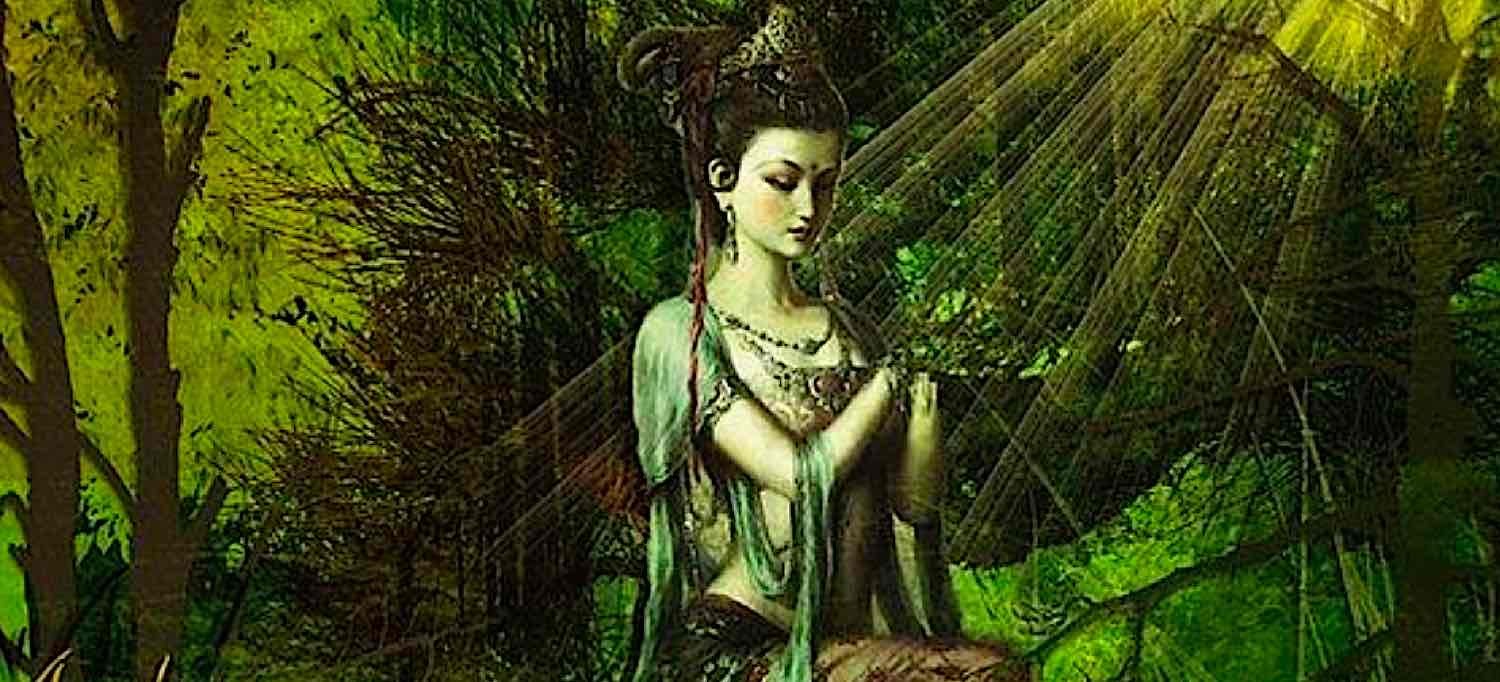
Tara represents chi and life energy
For Tara, who in life represents chi and wind and life and activity, Her Pureland is visualized as the most verdant — forests, mountains, lakes, waterfalls, birds, wildlife everywhere.
Other practitioners aspire to their personal Yidam’s Pureland. Vajrayogini practitioners aspire to Kechara. Others may aspire to Abhirati (Aksohobya’s Pureland), or the eastern Pureland of Medicine Buddha called Vaidūryanirbhāsa, the Lapis Lazuli Pure Land.
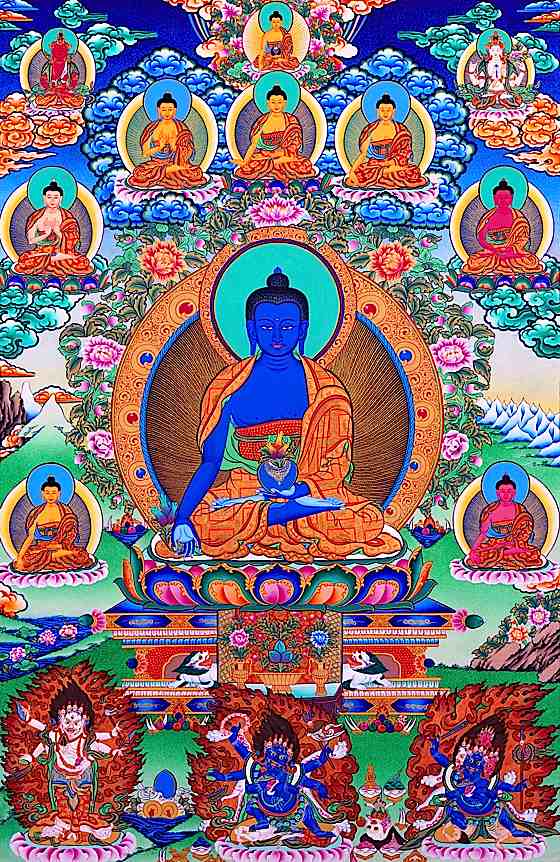
What is a Pure Land?
Pure Land is often described as a “mind space” where we can continue to practice with the Buddhas and Bodhisattvas until we attain ultimate enlightenment — free of the stress and suffering of Samsara. That’s simplistic. Ultimately, a Pureland may “appear” as a verdant paradise — symbols the mind recognizes — but it would be a mistake to assume we are born in bodily form in some distant heaven.
Most teachers describe the Pureland as within ourselves now. Or within the heart of the Buddha or Yidam — which is the same thing as being within ourselves.
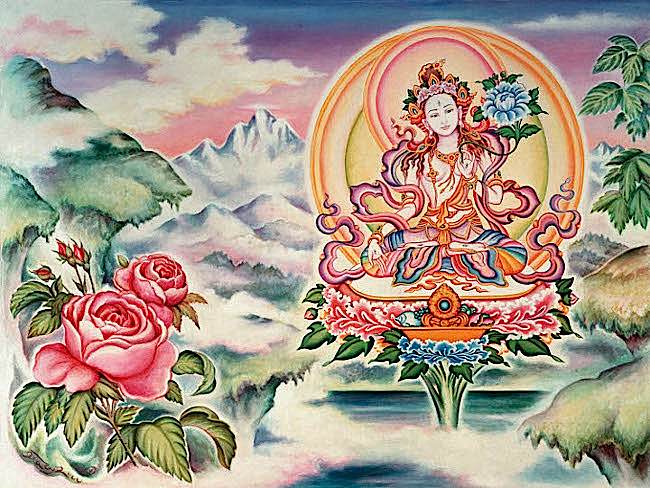
The Pureland for Nature-Lovers
For nature-lovers, tree-huggers, environmentalists, and those who adore Tara, the “Pure Land of choice” would be Tara’s Turquoise Pure Land Yurlod Kurpa (Yulo Koepa). Think of it as a wild, undefiled mountainous paradise in Sukhavati, the vast Western Paradise. It is inevitably described as a pristine, wild paradise, rather than a land of shining jewels favored in the elaborate descriptions of other Buddha Fields and Pure Lands (for example, Medicine Buddha’s Lapis Lazuli Pure Land.)
Her Pure Land in Mount Potala is described as “Covered with manifold trees and creepers, resounding with the sound of many birds, And with murmur of waterfalls, thronged with wild beasts of many kinds; Many species of flowers grow everywhere.”
Green Tara is also known as the Lady of the Verdant Forest or Tara of the Khadira Fragrant Forest. In this aspect, she is the ninth of the 21 Principle Taras. [1] Since Green Tara is the principal aspect of Tara, Her pureland is the pureland of all Taras; all Taras are One.
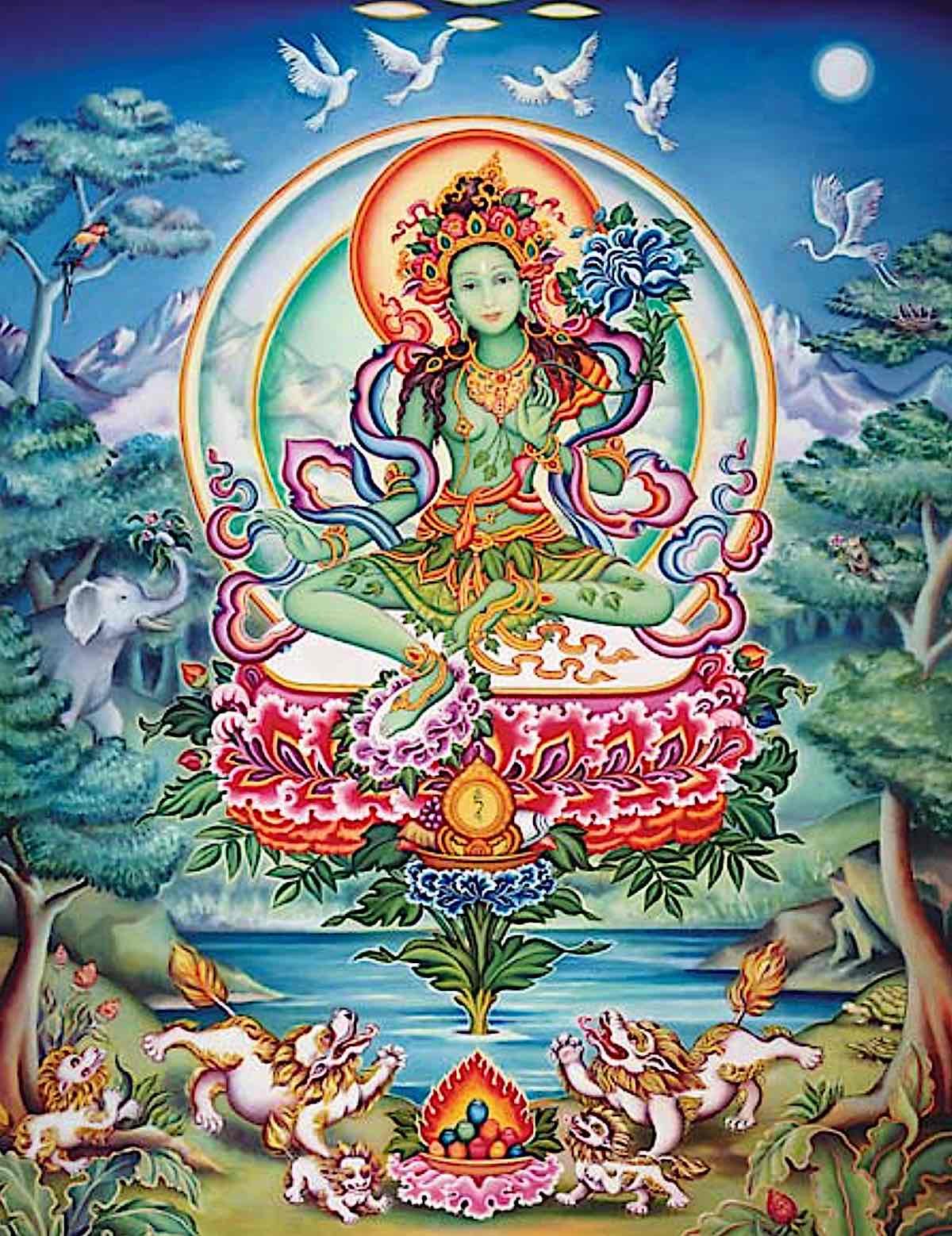
Tara is life — represented in her Green Colour; the colour of growth, life, forests, nature, mother Earth. Esoterically, Tara represents wind or chi. For this reason, it can be said she sustains our lives. She saves us. She is the activity of all the Buddhas. Since she is so active and vibrant in our lives, it seems intuitive that her Pureland would be equally vibrant and green. It likewise seems intuitive that those who loved and honoured her in life would aspire to continue receiving Dharma from Her after life, in her Turquoise Pure Land.
Tara’s wind energy
Tara is about activity — so active, millions call her name daily for help. She is also iconic of life, growth, verdant green, growing nature. Tara rules the “Wind element” which is vital energy. Wind or air is considered the most important element of life: “lung” or wind or chi energy or breath (Chinese) is what gives us life. When lung or chi fails, life fails. Wind is life. Air. Movement. The element that gives and sustains life.
Other Pure Lands might be “lapis lazuli” and jewels — metaphors for richness and purity. Tara’s Pure Land is verdant forests and peaceful wildlife — a perfect place for mental retreat. The name of Her Buddha Field Yulokod (depending on transliteration can be Yulo Koepa or Yurlod Kurpa) literally translates as “the Turquoise-colored Pureland.”
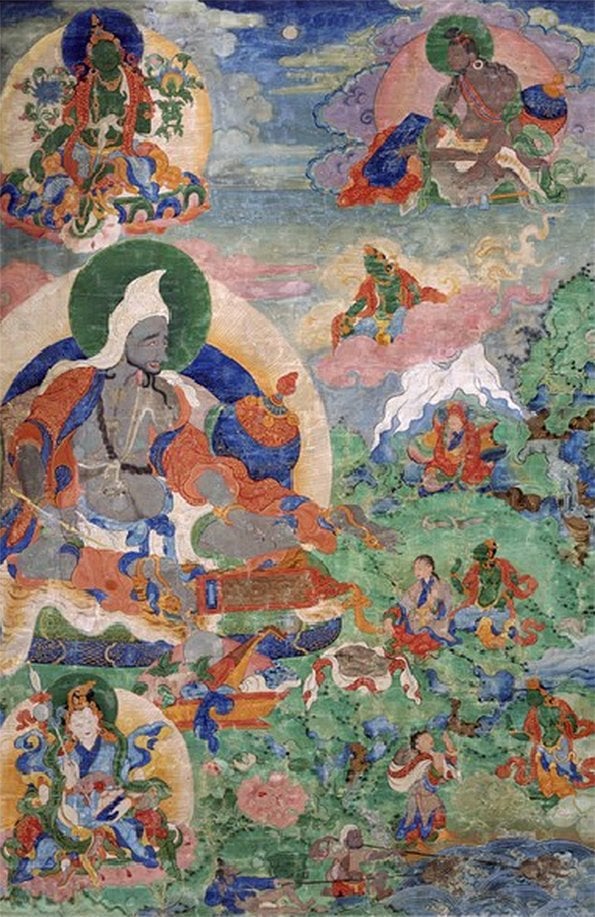
Descriptions of Tara’s Turquoise Pure Land
Khempo Yurmed Tinley Rinpoche, in the Green Tara Puja Commentary, described Tara’s verdant Pure Land this way:
“All of these deities, all of these enlightened beings that we are visualizing in front of us in the sky, are not just there in empty space, but are there in the pure land of Green Tara.
That pure land is called Yulod Kurpa, which means “the Turquoise-colored Pureland”. This is her heavenly, or celestial, paradise, which is complete with all aspects of a diving paradise, and is characterized by this turquoise color. This entire assembly arises here in this green pure land.
This is the name of Her celestial paradise, where living beings go to attain enlightenment. Something should be said about this turquoise-colored paradise. It resembles some sort of fantastic heavenly rock ‘n roll party. The deities there are filled with bliss, spending their time in dance and song, special enlightened dance and song, so that if ordinary beings even perceive it, even see it, they are filled with a sense of happiness and faith.
When we’re visualizing Green Tara and the enlightened deities, this is the setting, the environment in which they arise, these enlightened beings in this land where all of the beings are so happy and are engaged in dancing and singing. We should understand of this paradise of Green Tara that if we were to go there, if we were born there, our experience would have not even a hint of any of the miseries we have on earth, certainly none of the miseries of birth, sickness, old-age, and death.
As a matter of fact, all of the deities there (if we were to look at their appearance, we would say that they’re sixteen years old, never getting older, never getting younger) have bodies that are like a sixteen year old’s. They’re engaged in dancing and singing, but every sound made in the dances and the songs is a Dharma sound; in other words, it brings enlightenment to those who hear it. No other sounds are there. The music is played by what are called the “gandharvas”. A gandharva is a celestial or heavenly musician. So this is the nature of the pure land of turquoise color.
The process by which we’re doing this, at first, is what we call a process of imagination. In other words, we are imagining such a sight in front of us in the sky, Green Tara, all of these enlightened beings, and this fabulous heavenly Pureland of enjoyment and music, and so forth. We’re imagining this, we’re generating it from our imagination to begin with, but what we do then, the key thing that’s done, then, is the invocation (it’s the same word you would use for invitation).” [2]
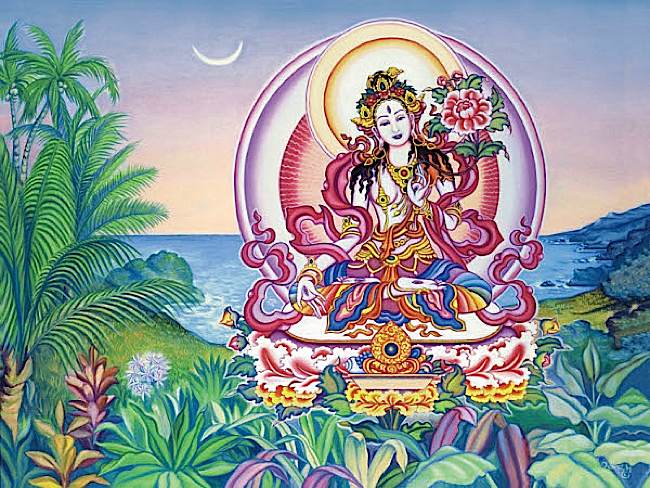
Delog Dawa Drolma’s Visit to the Pureland
In another description from someone who “traveled” there — in dream or astral form — of Yulo Koepa (or Yulokod; or Yurlod Kurpa) — from the Delog Dawa Drolma, a revered Lama, Dakini, and Delog:
“I came to a place where the entire country was verdant wherever I looked, beautiful and vividly clear, a marvelous environment with many extraordinary features.
Pavilions of five-coloured rainbow light hovered in the sky. Many kinds of flowers and lotuses grew everywhere. Here there was no concept of summer or winter. The wish-granting trees were in full leaf, and from the words of Buddhadharma in the Sanskrit language, such as Namo arya tare mam.
Birds that were emanations of the Noble Lady — sparrows, ducks, peacock, cranes, parrots, grouse, cuckoos, and swans — played everywhere. The land was filled with wealth and prosperity gems. Everywhere were pools of nectar endowed with eight fine qualities and elegantly appointed bathhouses made of precious jewels. In this realm, there was no concepts of birth, aging, illness or death.
All of the inhabitants were born miraculously from the hearts of lotuses.
In no future lifetimes would they hear unpleasant or discordant sound.
Those dwelling there were bodhisattvas who had attained high levels of
realization.This place surpassed the limits of imagination; its size could not be measured. It contained thousands of immeasurable mansions fashioned of the five precious substances. I arrived at the gateway of the central palace, a vast celestial mansion
of magical and marvelous appearance, having the power to liberate beings in
four ways.The very moment I entered it, I awoke from deep sleep of
ordinary rational consiousness and was free of the veils of ignorance. The
inner vision of my prisitine awareness expanded, and I experienced a surge
of love and compassion. I came to a courtyard in which many thousands of goddesses, dressed in green, chanted the praises to the twenty-one forms of Tara in the Sanskrit tongue. Occasionally, they played small finger cymbals, golden hand drums, and drums made of sandalwood, ebony, “serpents heart” wood, and four kinds of heart wood, as well as cymbals, gongs and flutes. They frequently
punctuated their chant with music performed on this inconceivable variety
of instruments.Upon hearing them, I felt an unimaginable sense of devotion; I made many offering praises with my mind. I proceed to the immeasurable central palace, the celestial mansion. I saw that the five layered walls were made of conch shell, gold, coral, emerald, and sapphire, all with friezes of ruby. The pillars and columns were made of red pearl, the main roof beams of quartz crystal, and the rafters were made of gems to illuminate the interior. Atop a cornice of gold was a pediment of coral, supporting a bluish green vault of tourquoise.
Melodious music from chimes on the roof top resounded taking
away the suffering of those in the lower realms. The fragrant scent of
incense of the immeasurable attitudes wafted about. There were fine
displays of unimaginably lovely offerings. In the center of the mansion, on a many-coloured lotus with a thousand petals and a moon disk seat, was the only refuge, the very embodiment of compassion, the sublime mother of all the victorious ones of the three times, the sister of the bodhisattvas, she whom both those in the human
world and those in the heavens worship with the crowns of their heads
touched to the soles of her feet.The goddess who born from the tears of the Exalted One, the noble Tara herself. Her body was bluish green, more intensely luminous than a mountains of turquoise fit by a thousand suns. Infinite rays of light shone from her form, which was adorned with major and minor marks of perfection. Her body was that of a youthful maiden sixteen years of age, clad in garments made from the silk of the gods adorned with immeasurably valuable ornaments of precious wish-fufilling gems. Her hair was shiny jet black, half of her tresses bound up in a topknot and with ribbons of blue green silk that fluttered in the breeze. With her left hand in the gesture symbolizing the Three Jewels, she held the stem of a blue lotus, the petals of which
bloomed next to her ear. With her right hand she held the gesture of
granting refuge.She, Tara, Mother of all Buddha’s sheltered all beings from the limitless fears of this confused world of cyclic existence. She held her two legs half-crossed in the posture of a feminine bodhisattva. Many noble feminine bodhisattvas were circumbambulating her and there were also many varied manifestations of Tara herself. All were distinctly visible but without the aggregates of flesh and blood. They appeared as illusory forms of pristine awareness, a magical display manifesting in
myriad of ways. I saw them in all their scintillating brilliance, like stars and planets reflected in the vast ocean. At this point, my grasping at ordinary reality spontaneously ceased and I experienced for a time an unimaginable sense of cosmic order.By Delog Dawa Drolma, Tibet
“She is a Heroine with a courageous mind”
“Those sentient beings who actually wish to see the pure realm of Tara in their minds will rejoice in the cooling rays of pure vision in the soothing shelter of the blooming lotus of faith.”
A quotation from the written works of
Delog Dawa Drolma
A revered Lama, Dakini, & Delog
From Tibet circa 1925

Phowa and consciousness
In Tibetan Buddhism, there is a lovely Phowa practice, where we “rehearse” sending our consciousness from our body to the Pureland at the heart of the Buddha. The most common one is Amitabha Phowa, although there is a practice for all Buddhas. The concept of sending our consciousness, visualized as white light in our central channel, shooting up like a shooting star into the very heart of Amitabha, is a profound symbolic practice.
It trains us first of all to work with our consciousness. Equally, it demonstrates to our resistant mind — a mind that clings to the illusion of samsara — that the Pureland is a state of mind. We send our consciousness to the heart of the Buddha — heart being the seat of the mind.

Does that mean you can’t view the Pureland as a “place” you go to after you pass away? Of course not. Our minds work visually — which is why we visualize symbolically in Buddhist meditation. Green, for example, represents growth, life, wind, activity. To visualize and see the Pureland as a vibrant natural wilderness full of birds and life is not incompatible with the loftier concepts of “mind field.”
One interesting note is that Chittamani Tara Phowa practice is unique. Instead of visualizing “mind” ejecting from our bodies to join the Buddha’s heart, we visualize our entire body and mind joining Tara. While regular Phowa practice has risks of “shortening life” due to the practice of ejecting consciousness, Tara’s Phowa practice is considered no risk, since in her practice we never separate mind/body. This is typical of Tara’s emphasis on “chi” and life energy.
NOTES
[1] Edward Conze, Buddhist Texts Through the Ages, p.196.
[2] From teaching on Green Tara April 4, 1997 by Khempo Yurmed Tinley Rinpoche, Oral translation by Robert Clark, Ph.D. (T.T. Dorje)
6 thoughts on “Tara’s splendid Turquoise Pure Land Yurlod Kurpa, cooling rays of pure vision in the soothing shelter of the blooming lotus of faith”
Leave a Comment
More articles by this author

Chintachakra White Wish-Granting Wheel Tara: The All-in-One Mother of Buddhas in Vajrayana Buddhism – Her Significance, Mantra and Why Her Practice is Essential

Tara’s Great Dharani Supreme of all Mantras –with Music version– and the Sutra of Tara Who Protects from the Eight Fears: in Tara’s Own Words

Tara Teaching from His Holiness the Sakya Trichen: Interview Q & A: Do you have a Tara Question? Chances are His Holiness Already Answered…

Boundless Heroine Tara: Bodhisattva, Mother, Saviour, Friend: Stories of Rescues and a Sadhana by Marpa the Translator
Search
Latest Features
Please support the "Spread the Dharma" mission as one of our heroic Dharma Supporting Members, or with a one-time donation.
Please Help Support the “Spread the Dharma” Mission!

Be a part of the noble mission as a supporting member or a patron, or a volunteer contributor of content.
The power of Dharma to help sentient beings, in part, lies in ensuring access to Buddha’s precious Dharma — the mission of Buddha Weekly. We can’t do it without you!
A non-profit association since 2007, Buddha Weekly published many feature articles, videos, and, podcasts. Please consider supporting the mission to preserve and “Spread the Dharma." Your support as either a patron or a supporting member helps defray the high costs of producing quality Dharma content. Thank you! Learn more here, or become one of our super karma heroes on Patreon.
Lee Kane
Author | Buddha Weekly
Lee Kane is the editor of Buddha Weekly, since 2007. His main focuses as a writer are mindfulness techniques, meditation, Dharma and Sutra commentaries, Buddhist practices, international perspectives and traditions, Vajrayana, Mahayana, Zen. He also covers various events.
Lee also contributes as a writer to various other online magazines and blogs.




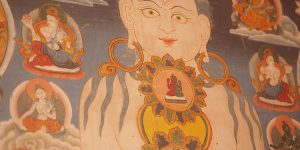





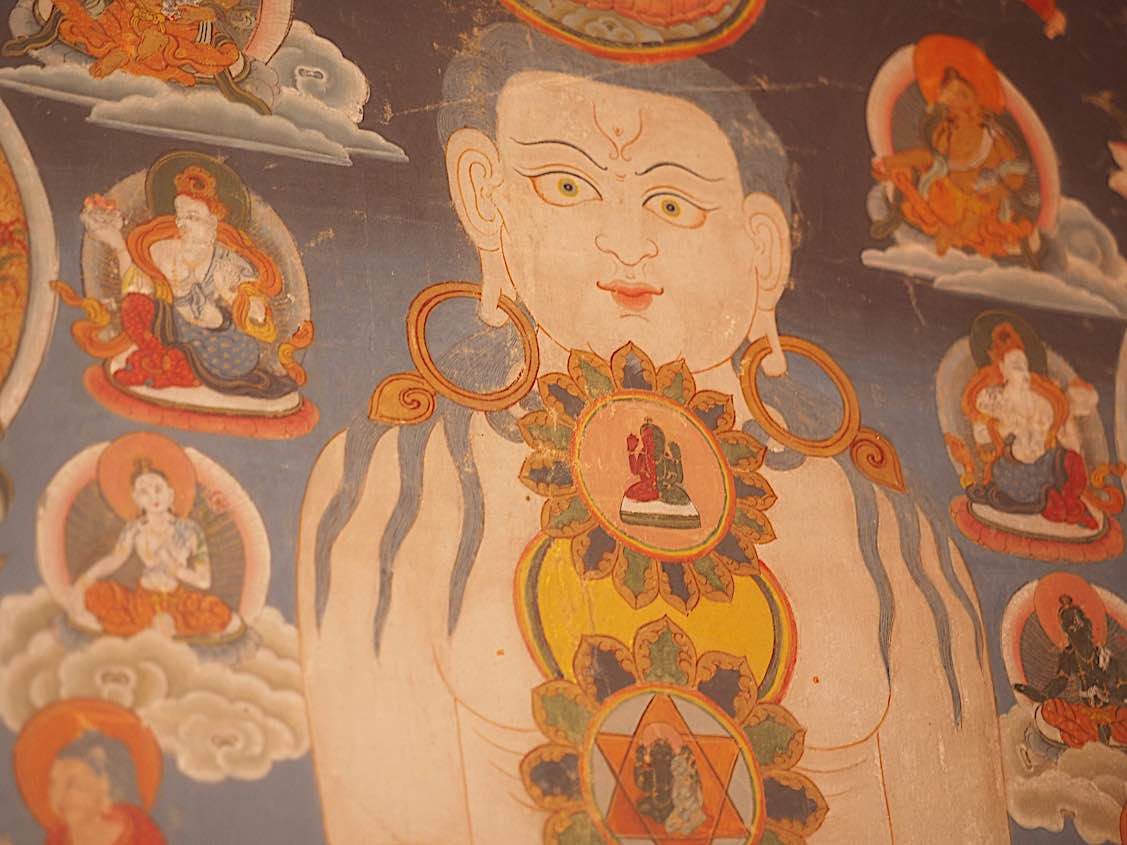



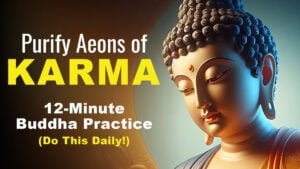
Beautiful! Very inspiring. Tara’s Turquoise Pure Land – described as a pristine, wild paradise – sounds like the right place for me 🙂 The forest is the home of my heart, my ashram, my temple, my place of worship and contemplation. Nature is a monastery without walls, the true cosmic church of all living beings. Namo Arya Tara!
Wonderful.
You should really edit this. Chi and Lung are totally different things. Tara is not associated with Chi.
Thank you for your comment. At this time we won’t edit this, to retain the author’s intention in the feature to define Chi/Prana/Lung as “lifeforce. In general terms, (although not identical in terms of elements, for example) Chi, Lung, Prana — while slightly different concepts — are similar enough in this context to be used interchangeably (However the author would be glad to edit if you provide citations and contrary information with references.). Chi is are more widely known term, and the author has used this to represent the “life force” aspect — rather than focusing on the differences. Tara’s higher practices, certainly include completion stage practices and meditations on lung/ breath/ lifeforce/ tummo. Chittamani Tara in particular is considered Mother Tantra generally in Highest Yoga Practices. If you’d like to reference specific citations and corrections, we’d be glad to include them. Tara practice most certainly does include meditations on lung, tummo, Completion, etc. I’m guessing that you’re pointing to the use of Chi as a synonym for Lung? While the concepts are somewhat different, most teachers use the term interchangeably. The root of both the term lung and chi, I believe, is Prana, the Sanskrit term. Lung (Tibetan: རླུང rlung) means wind or breath. Prana in Sanskrit means “vital force” While it’s true Chi may have a broader definition, (external chi, internal chi, etc) Lung is likewise similarly viewed: rLung is that it is a subtle flow of energy and out of the five elements (air, fire, water, earth and space). Of course the five elements in Chinese philosophy are slightly different (metal and wood) and there is no doubt IChing and studies of Chi are complex, in general the terms, as used here, are referring specifically to the “Lifeforce” aspect. Thank you again for taking the time to comment! Appreciate it!
Wonderful article, thank you!
I am curious where the author found the passage regarding Tara’s Pure Land being in Potala, which is within Avalokiteshvara’s Pure Land which is within Amitabha’s Sukhavati?
Dear Julie, Thank you for your kind words. This is mentioned in various teachings I’ve attended from more than one teacher, especially teachings on Chittamani Tara and 21 Taras — and also the teachings on Tara Phowa. The readiest source of information in English is Edward Conze, Buddhist Texts Through the Ages, I believe. Because in Tara’s many lives she worked to save sentient beings alongside different Buddhas, in various Tantras you may find a reference to Tara’s pureland being in the NORTH —— since she is considered the consort of Amoghasiddhi — or in Sukhavati, since Amitabha is her precious Buddha Guru. Both can be, in essence, appropriate. Depending on our practice, we might visualize Amitabha over Tara’s head — for example in Chittamani Tara practice and others. Since Tara’s pureland is essentially inseparable from Tara’s heart/mind, it would be appropriate to think of her Pureland as being part of Amitabha’s Pureland Sukhavati. It is in Chittamani Tara teachings that I first heard of Tara’s Turquoise Pureland being part of Sukhavati. On the other hand, in other practices, where we are visualizing her with her consort co-equal Buddha Amoghasiddhi, you could think of this pureland in the North. Directions are part of relative, not ultimate thinking, so it’s all somewhat whimsical. When we do Tara Phowa — ejecting our consciousness into Tara’s Turquoise Pureland — we visualize our consciousness leaving from our heart and going up to join Tara at her heart. This is symbolic, but it indicates that the Pureland is not other than her mind. In esoteric visualizations, and notably in visionary description — as cited in this feature — this experience is described as a natural paradise, a Turquoise Pureland. Hope that helps, sorry I couldn’t be more specific. In kindness, Lee